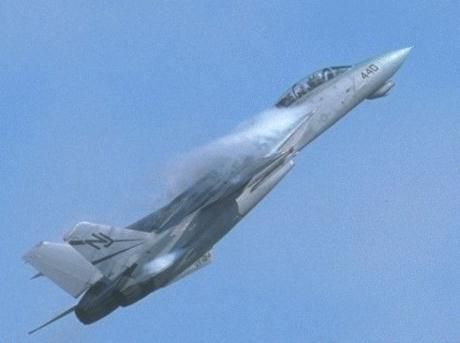

The recent trend toward multirole aircraft have seen a collection of modifications to the F-14 that will give it air-to-ground capability. "Bombcats" are now cleared to carry the Mk 80 series of unguided iron bombs (and have carried such ordnance packages over places like Iraq and Bosnia). Current plans include equipping the F-14 with LGBs and various air-to-ground missiles such as the AGM-84E SLAM and the AGM-88 HARM. Recently it was announced that F-14s would be equipped with the LANTIRN (Low-Altitude Navigation and Targeting Infra-Red for Night) system, as is the F-15E and night attack versions of the F-16. The LANTIRN pods will be carried on the glove pylons.
The original model of the F-14 was, predictably, the F-14A. The F-14B, with more powerful General Electric F110-GE-400 engines, an upgraded ECM suite, and some minor structural modifications, entered service in 1990. The ultimate version of the Tomcat is the F-14D, which is an F-14B with a powerful new digital AN/APG-71 radar, dual nose pods that house an infra-red search and track system and an optical television camera, new ejection seats, and a modernized cockpit. In addition, a new digital flight control system is currently being tested with the F-14D that will improve its handling qualities in-flight and coming aboard the carrier.
In the past, carrier air wings deployed with two F-14 squadrons of roughly twelve aircraft each. The air wing of the future, however, will consist of a single fourteen aircraft F-14 squadron.